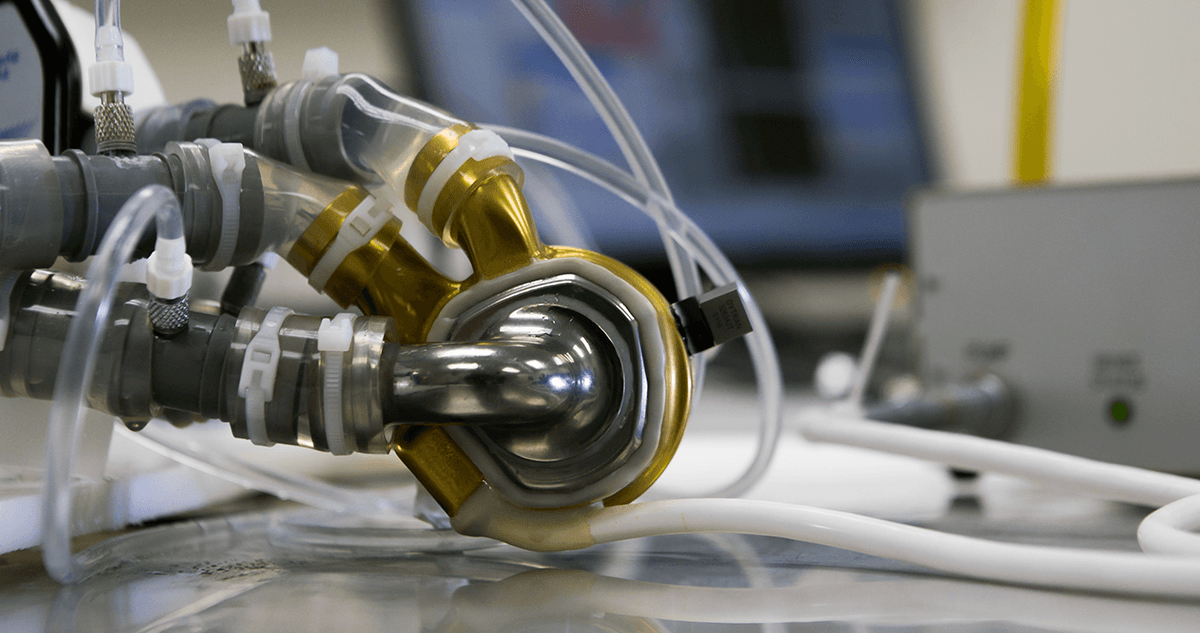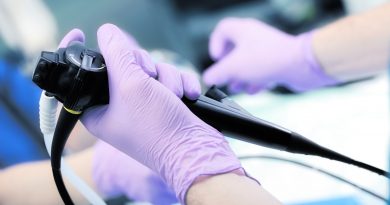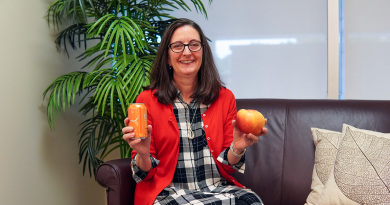Heart disease and the quest for the perfect artificial heart

End-stage heart failure is a leading cause of death across all demographics and there is no good therapy to treat it, says Dr. William Cohn, Baylor College of Medicine heart surgeon, chief medical officer of BiVACOR Inc. and member of The Texas Heart Institute. Medications can slow down progression of the disease but there is still progression that ultimately leads to death.
Understanding heart failure
Heart failure occurs when the heart is no longer strong enough to pump blood efficiently to the organs that need it. This leads to a cascade of complications – organ failure involving the kidneys, liver and brain – causing the heart to stretch and grow larger in a futile attempt to compensate. Unfortunately, everything the heart does to improve itself only worsens the condition, leading to more severe heart failure.
“The heart’s attempt to adapt when it’s failing is like throwing water on a grease fire,” Cohn said. “Every compensation it makes to try to fix itself only makes things worse.”
The heart is a hollow muscle, filling and ejecting blood with each beat. Anything that interferes with this process compromises its function. As the heart struggles, it enlarges, making the chambers larger, the walls thinner and the wall tension higher. These factors conspire to make the heart weaker and less energy efficient. The damaged heart sends signals to the kidneys to hold onto more fluid, leading to edema in the arms, legs and internal organs. The cycle continues as heart failure worsens, with every attempt by the heart to heal itself making the situation more dire.
“Heart failure is a vicious cycle,” Cohn said. “The sicker the heart gets, the sicker it makes the rest of the body. It’s a slow march toward organ failure, and that’s the challenge we’re constantly trying to overcome.”
Modern advances in treating heart failure
Today’s medical devices focus on interrupting the heart’s downward spiral. Cutting-edge technologies like AI risk assessments, high-resolution virtual cardiac mapping and shockwave treatments to break up arterial blockages are transforming how doctors manage heart disease. Devices like drug-eluting stents, lipid-lowering medications and catheter-based treatments have greatly improved survival rates for heart disease patients.
For patients suffering from ischemic cardiomyopathy – where the heart muscle is damaged due to blocked coronary arteries and a lack of blood supply – these advancements have never been better. Similarly, patients with idiopathic cardiomyopathy, whose hearts are sick despite wide-open arteries, benefit from treatments that target the underlying causes.
The rise of mechanical heart devices
Implantable mechanical heart pumps play a crucial role in extending the lives of heart failure patients. Pioneers like Dr. O Howard “Bud” Frazier faced skepticism when they first developed large, cumbersome volume displacement pumps, but their determination paid off. The first pumps, which were as big around as a coffee can, were implanted into patients’ abdomens, and although many died during the implant procedure, those who survived improved enough to wait for heart transplants. The flexible diaphragms and complex ejection mechanisms made these pumps susceptible to mechanical failure after 18 months or so, but if you could transplant the patient before the pump failed, results were excellent.
“People scoffed at the idea of implanting something that big into a patient,” Cohn reflected. “But those first few who survived showed us that we were on the right track. It’s incredible how far we’ve come from those early days.”
Today’s left ventricular assist devices (LVADs) have come a long way. The Rematch Trial published in the New England Journal of Medicine in 2001 demonstrated that pumps are more effective than medications in patients dying of heart failure, leading to FDA approval. Subsequently, Frazier led a paradigm shift away from large volume displacement pulsatile output pumps to smaller, rapidly spinning turbine-like pumps. These modern LVADs, such as the HeartMate III, are smaller and more efficient, but more importantly, much more durable. More than 70,000 pumps have been implanted worldwide. Many of these pumps have lasted 15-20 years.
The quest for the total artificial heart
The next frontier is the development of a permanent artificial heart. Although many heart failure patients are well served by LVADs, patients with failure of both ventricles often require heart transplantation. Cohn and Frazier have been on an almost 20-year crusade to leverage the advantages of rapidly spinning pumps to reinvent the artificial heart. After performing extensive animal research at The Texas Heart Institute, their efforts culminated in the implantation of the first rapidly spinning twin turbine artificial heart in a gravely ill patient in 2011. Subsequently, they met a brilliant engineer, Dr. Daniel Timms, from Brisbane, Australia, who had taken the concept one step further. The BiVACOR device he invented has a single spinning element suspended in a computer-controlled electromagnetic field. Cohn and Frazier shifted their focus from the twin turbine heart to Timm’s design. After performing additional extensive animal studies over the next 10 years, the FDA has approved trials for the first five clinical implants of the BiVACOR Total Artificial Heart (TAH).
“This is where the evolution of heart devices was always headed,” Cohn said. “Nature gave us a heart that beats, but technology can give us a heart that spins – more efficiently and potentially more reliably.”
In fact, the first-in-human implantation of the BiVACOR TAH recently was performed at Baylor St. Luke’s Medical Center in July by Drs. Alexis Shafii and Kenneth Liao, members of the Michael E. DeBakey Department of Surgery and part of The Texas Heart Institute. Cohn proctored the implantation. Dr. Frazier and other experts from The Texas Heart Institute, BiVACOR, Baylor St. Luke’s Medical Center and Baylor College of Medicine also contributed to this important moment. The device supported the patient for eight days before he was bridged to a heart transplant.
The Texas Heart Institute, Christ Hospital in Cincinnati, Duke Health in Durham and Banner Health in Phoenix, are at the forefront of testing this new device. If successful, this advancement could provide a lifeline for heart failure patients worldwide, offering a future where heart transplants are no longer the only option. Currently, BiVACOR plans to use the TAH as a bridge-to-transplant device in clinical trials and seek FDA approval for that purpose. Subsequently, Cohn and others plan to work toward demonstrating that the device is durable enough that it can be used as a destination therapy – not to keep a patient alive until they receive a transplant but to implant as a permanent solution instead of a transplant. These studies should be underway in the next three years.
“The world has needed an artificial heart forever,” Cohn said. “We’ve been chasing this goal since the 1960s, and we are finally at the point where we see it being realized with a device that has the potential to be a permanent solution.”
By Tiffany Harston, communications associate in the Michael E. DeBakey Department of Surgery



